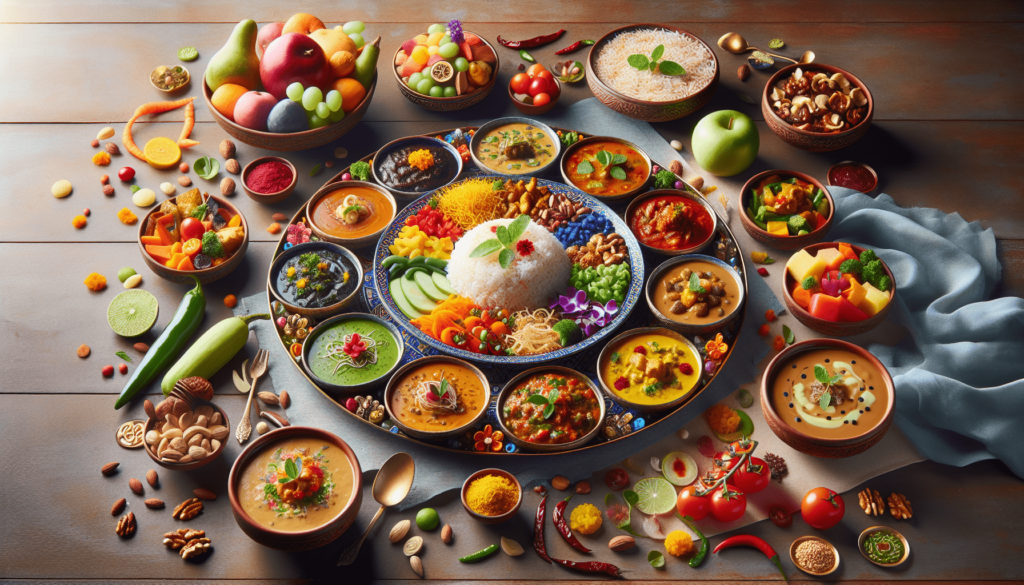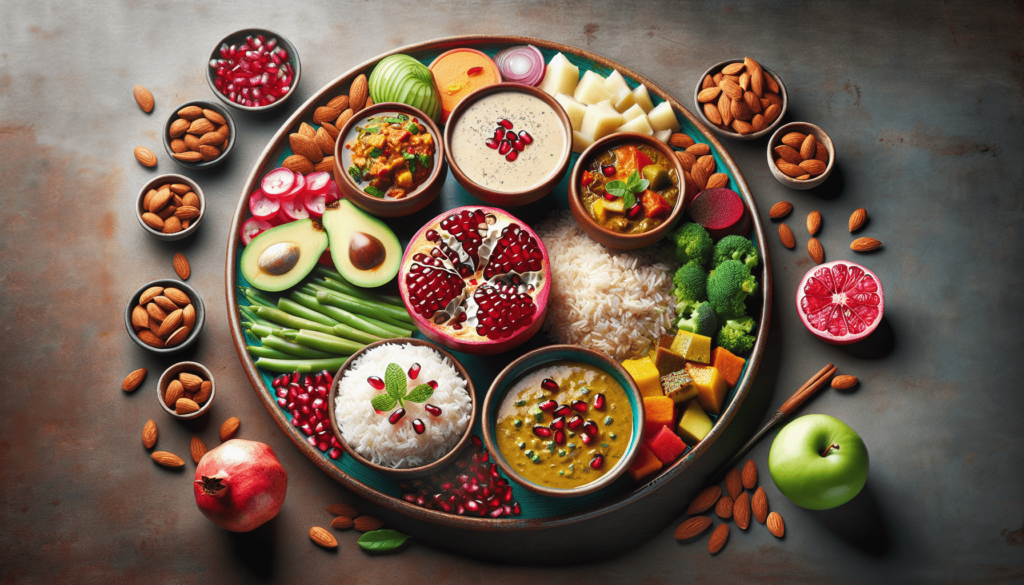Welcome to an informative article on diabetes and Indian food! In this piece, we will delve into the impact of traditional Indian cuisine on managing diabetes. With its rich flavors and diverse ingredients, Indian food can present both challenges and opportunities for individuals living with diabetes. Let’s explore some key considerations and tips for navigating the delicious world of Indian cuisine while keeping your blood sugar levels in check.
Diabetes And Indian Food
Have you ever wondered how traditional Indian cuisine affects diabetes management? Today, we will explore the impact of Indian food on diabetes and provide tips on how to make healthier choices while still enjoying the flavors of this delicious cuisine.

Understanding Diabetes
Before we delve into how Indian food can affect diabetes, it’s important to have a basic understanding of the disease. Diabetes is a chronic condition that affects the way your body metabolizes sugar (glucose). There are two main types of diabetes: Type 1 and Type 2. Type 1 diabetes is usually diagnosed in childhood and is characterized by the inability of the body to produce insulin. On the other hand, Type 2 diabetes is more common and typically develops in adulthood. It occurs when the body becomes resistant to insulin or doesn’t produce enough insulin to maintain normal blood sugar levels.
The Role of Diet in Diabetes Management
Diet plays a crucial role in managing diabetes. By making healthy food choices, you can control your blood sugar levels and reduce the risk of complications associated with diabetes. A balanced diet that includes a variety of nutrients is essential for overall health and well-being.
Traditional Indian Diet
Indian cuisine is known for its rich flavors, aromatic spices, and diverse ingredients. Traditional Indian meals often include a combination of vegetables, lentils, whole grains, and dairy products. While Indian food can be healthy and nutritious, it can also be high in calories, saturated fats, and carbohydrates, which may not be ideal for individuals with diabetes.
Carbohydrates in Indian Food
Carbohydrates are an essential nutrient that provides energy to the body. However, for individuals with diabetes, it’s important to monitor carbohydrate intake to prevent spikes in blood sugar levels. Indian food is rich in carbohydrates, especially in the form of rice, bread, and lentils. Limiting portion sizes and opting for whole grain varieties can help control blood sugar levels.

Spices and Their Impact on Blood Sugar
Spices are an integral part of Indian cuisine and are known for their health benefits. Some spices, such as turmeric, cinnamon, and fenugreek, have been shown to improve insulin sensitivity and lower blood sugar levels. Including these spices in your meals can be beneficial for diabetes management.
Tips for Making Healthier Choices
When dining on Indian food, there are several tips you can follow to make healthier choices and manage your diabetes effectively.
Choose Whole Grains
Whole grains, such as brown rice, quinoa, and barley, are rich in fiber and nutrients, making them a better choice for individuals with diabetes. Opting for whole grain bread and rice instead of white varieties can help stabilize blood sugar levels.
Include Lean Proteins
Proteins are essential for building and repairing tissues in the body. Including lean sources of protein, such as chicken, fish, tofu, and lentils, in your meals can help control hunger and prevent spikes in blood sugar levels.
Portion Control
Controlling portion sizes is key to managing diabetes and maintaining a healthy weight. When eating Indian food, try to stick to recommended portion sizes and avoid overeating, especially when it comes to high-calorie dishes like biryani and creamy curries.
Load Up on Vegetables
Vegetables are low in calories and rich in vitamins, minerals, and fiber. Including a variety of vegetables in your meals can help you feel full and satisfied without consuming excess calories. Choose colorful vegetables like spinach, bell peppers, and cauliflower to add nutrients and flavor to your dishes.
Limit Added Sugars
Indian desserts are known for their rich and sweet flavors, but they can also be high in added sugars and calories. Limiting your intake of sweets and opting for fresh fruit or nuts as a healthier alternative can help you manage your blood sugar levels more effectively.
Stay Hydrated
Drinking plenty of water throughout the day is essential for proper hydration and can help regulate blood sugar levels. It’s important to stay hydrated, especially when consuming spicy or salty foods, as they can lead to dehydration.

Balancing Flavors in Indian Cooking
Indian cuisine is characterized by its diverse flavors, which include sweet, sour, salty, bitter, and umami. Balancing these flavors in your cooking can help create delicious and satisfying meals without compromising your diabetes management.
Sweet Flavors
Indian desserts are often sweetened with sugar, honey, or jaggery. To reduce the amount of added sugars in your diet, you can use natural sweeteners like stevia or monk fruit extract in your desserts. Additionally, incorporating naturally sweet fruits like mangoes, bananas, and papayas into your meals can satisfy your sweet tooth without spiking your blood sugar levels.
Sour Flavors
Tamarind, lemon, and yogurt are common sour ingredients used in Indian cooking. Sour flavors can add a tangy kick to your dishes and help balance the richness of creamy curries. Opting for low-fat or Greek yogurt can provide the same tangy flavor without the added calories and saturated fats.
Spicy Flavors
Spices like chili powder, cumin, and coriander are used to add heat and flavor to Indian dishes. Spicy foods can stimulate the metabolism and aid in digestion. However, if you have sensitive stomach or digestive issues, you may want to limit the amount of spicy foods in your diet to avoid discomfort.
Bitter Flavors
Bitter vegetables like bitter gourd (karela) and fenugreek leaves are commonly used in Indian cuisine for their health benefits. Bitter flavors can help stimulate digestion and improve insulin sensitivity. Including bitter foods in your meals can be beneficial for diabetes management.
Umami Flavors
Umami, also known as the fifth taste, is a savory flavor that enhances the overall taste of a dish. Ingredients like tomatoes, mushrooms, and soy sauce provide rich umami flavors to Indian dishes. Including umami-rich foods in your cooking can help you reduce the need for added salt or fats without sacrificing flavor.
Dining Out Tips
Eating out at Indian restaurants can be a fun and enjoyable experience, but it can also present challenges for individuals with diabetes. Here are some tips for dining out while managing your diabetes effectively.
Choose Wisely
When looking at the menu, opt for dishes that are grilled, steamed, or baked instead of fried or deep-fried. Grilled tandoori dishes, steamed dumplings, and baked samosas are healthier alternatives to fried snacks.
Ask for Modifications
Don’t be afraid to ask the chef to make modifications to your dish to accommodate your dietary needs. Requesting less oil, salt, or sugar in your meal can help you control your blood sugar levels and make healthier choices.
Share Dishes
Indian portions can be quite large, so consider sharing dishes with your dining companions to avoid overeating. Sharing different dishes can also allow you to taste a variety of flavors without consuming excessive calories.
Watch Your Beverages
Indian restaurants often serve sugary drinks like lassi, chai, and soda, which can contribute to spikes in blood sugar levels. Opt for water, unsweetened tea, or sparkling water with a splash of lemon or lime as healthier beverage options.
Limit Naan and Rice
Naan, roti, and rice are staples of Indian cuisine, but they can also be high in carbohydrates. Limiting your intake of these items or opting for whole grain varieties can help you maintain stable blood sugar levels while still enjoying your meal.

Conclusion
In conclusion, diabetes management and Indian food can go hand in hand with careful planning and mindful choices. By understanding the impact of different ingredients and flavors in Indian cuisine, you can make healthier choices while still enjoying the delicious flavors of this diverse cuisine. Remember to listen to your body, monitor your blood sugar levels, and make adjustments as needed to maintain good health and well-being.


